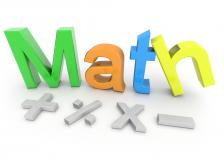How to Convert Decimals with Single Repeating Numbers Into Fractions
Learn how to convert this kind of decimal into a fraction.
By
Jason Marshall, PhD
Jason Marshall, PhD
September 28, 2011
1 minute read

For more, see How To Convert Repeating Decimals to Fractions, Part 1
Math image courtesy of Shutterstock

